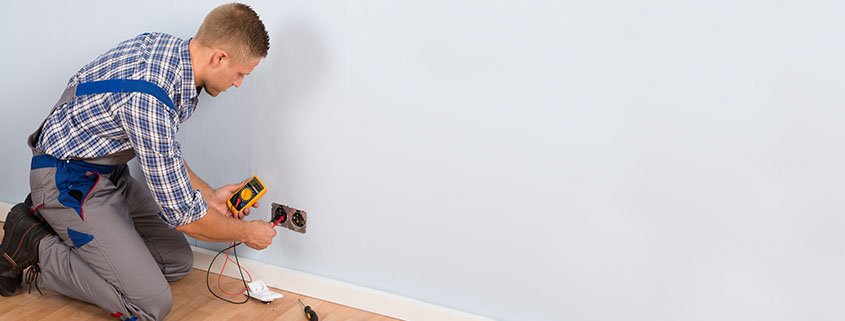Having a Breakdown? Solutions for Home Mechanical and Electrical System Failures
Consumers who experience a loss involving the failure of one of the many mechanical or electrical systems in their homes are often surprised to learn such losses are commonly excluded under a standard homeowners policy. Be advised: standard homeowners insurance policy exclusions preclude coverage for physical loss or damage to critical home systems that are a result of the following:
- Wear and tear
- Deterioration
- Mechanical breakdown
- Latent defect
- Inherent vice
- Corrosion
Consider the following components that constitute the infrastructure of many homes, large and small:
- Heating, ventilation, and air conditioning (HVAC)
- Electrical systems
- Hot water heating/wells/water filtration
- Green systems, including solar, geothermal, heat pumps, hybrid fuel boilers, and home batteries
- Kitchen and laundry appliances
- Generators
- Pool pumps and associated systems
- Networked/smart/connected home systems and their associated equipment
With constantly evolving home systems, it is becoming increasingly important to anticipate a breakdown and explore quality coverage solutions.
Insurance Options
Augmenting preventive measures to reduce the risk of loss with a supplemental insurance strategy is an option well worth examining, and there are several different insurance solutions available. Let’s explore the advantages and limitations of these solutions:
- Home Warranty Coverage: Home warranty solutions are often made available to owners of newly constructed homes and are funded through the purchase of the home. These are usually very limited in the scope of covered equipment, have specified limits for covered components, can exclude common home systems, have loss settlement provisions that allow for reconditioned or remanufactured parts, require the use of a vendor network for maximum benefit, and are generally expensive.
- Service Protection Plans and Individual Item Warranties: Typically secured at the time of purchase, these, like home warranties, are usually very limited in coverage, cover only the item purchased, often expire before the item fails, and limit coverage to repair or replace up to the amount originally spent. Consumer Reports consistently recommends steering clear of extended warranties.
- Homeowners Insurance Equipment Breakdown Coverage: This solution can be accessed as an endorsement to certain homeowners insurance policies, and offers a number of advantages given the broader protection and the many limitations of other insurance options. Meanwhile, coverage terms and conditions can vary widely, making it essential to work with an insurance provider who can help you examine the many important considerations needed to make a well-informed decision.
Examples of Important Considerations
Insurance practitioners can help consumers select an insurance solution that meets their protection expectations. Following are examples of topics that should be addressed:
- Problematic wear and tear exclusion in favor of providing coverage for loss caused by sudden and accidental mechanical or electrical breakdown, or bursting, cracking, or splitting of a broad category of equipment
- Learn what equipment / systems are excluded for coverage
- Covered equipment typically includes equipment that meets either of the following two criteria: uses, generates, or transmits energy OR operates under vacuum or pressure
- The following types of home systems can often qualify for coverage under a quality homeowners equipment breakdown endorsement, unless the cause of loss is specifically excluded:
- Gas-fired furnace
- Hot water heater
- Solar panels
- Well pump motor
- Central air-conditioning
- Central vacuum system
- Knowing what property is covered, the question becomes: what types of losses are covered? — Mechanical breakdown, electrical breakdown, bursting, cracking, or splitting
- Common causes of loss that for which coverage is often excluded:
- Rust, corrosion, erosion, deterioration, or gradual loss of efficiency
- Leakage or seepage at or from any connection, valve, fitting, shaft, or seal
- Programming error, limitation, computer virus, malicious code, loss or use of data
- Interruption of electrical power, fuel, or water supply,
- Any condition that can be corrected by resetting, recalibrating, or by maintenance
- Cosmetic or other damage that does not impair functionality
What Could Happen?
To understand the many protection benefits available to consumers who have access to broadened mechanical equipment breakdown coverage, the following are examples of the types of losses that could be covered by homeowners equipment breakdown coverage, and their approximate costs:
- Cracked heat exchanger in forced hot air furnace — $7,500
- Well motor pump windings melted and shorted out — $12,000
- Gas hot water heater tank ruptured — $4,850
- Propane generator crankshaft seized — $11,000
- High-end refrigerator compressor seized — $7,500
- Freon line ruptured in air-conditioning coils — $6,000
Even for owners of historic homes, gone are the days when a home’s infrastructure was comprised of a furnace, hot water heater, and a few ancillary systems. The mechanical and electrical systems and equipment in most homes today are comprised of a range of components and features that have become increasingly vulnerable to a wider range of risks. I am happy to be a resource to any who wish to examine the costs and benefits of adding equipment breakdown coverage through one of the select group of premier insurance providers we are proud to represent.
Tim O’Brien
SVP, Property & Casualty
Assurex Global












Leave a Reply
Want to join the discussion?Feel free to contribute!